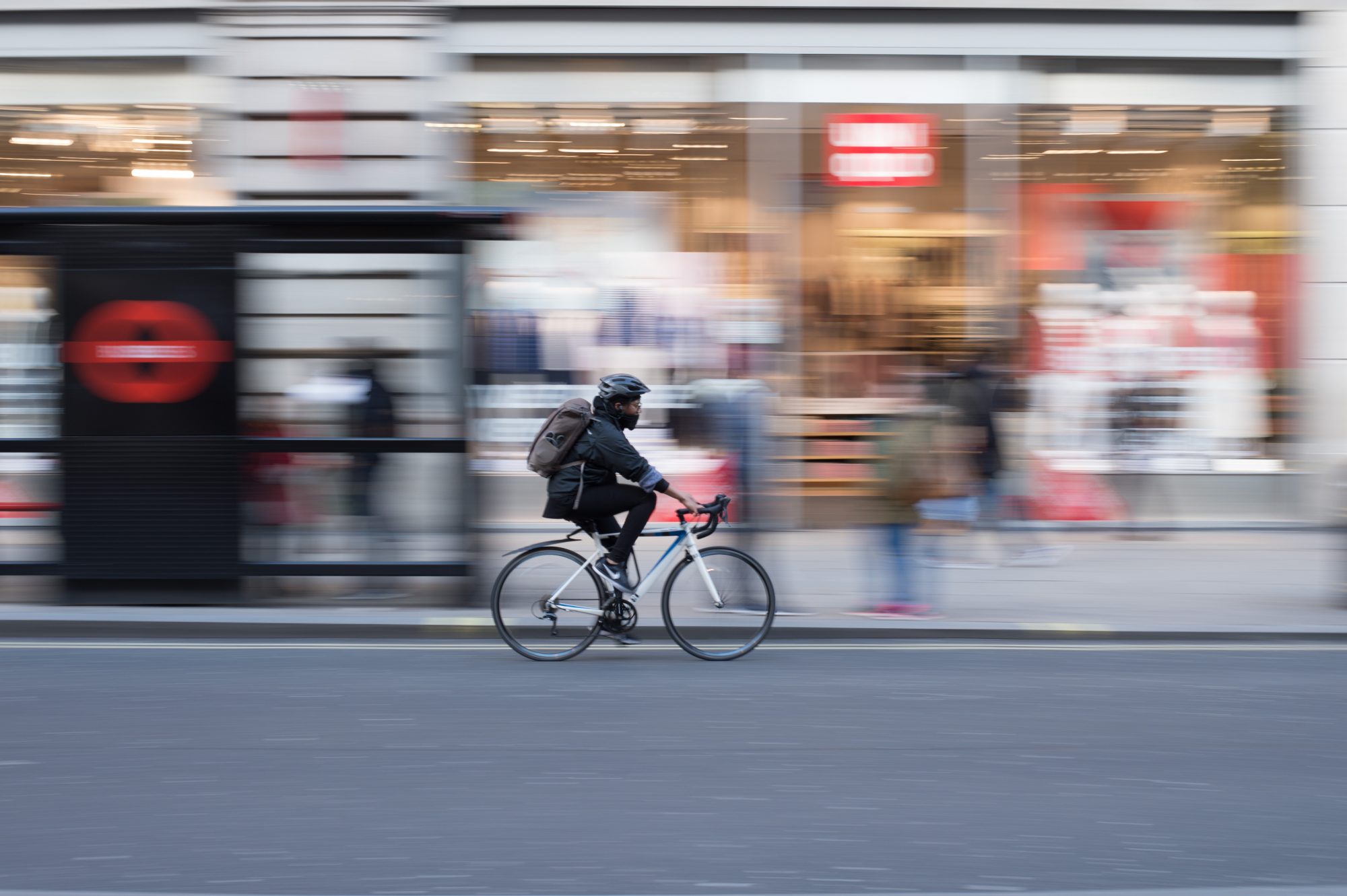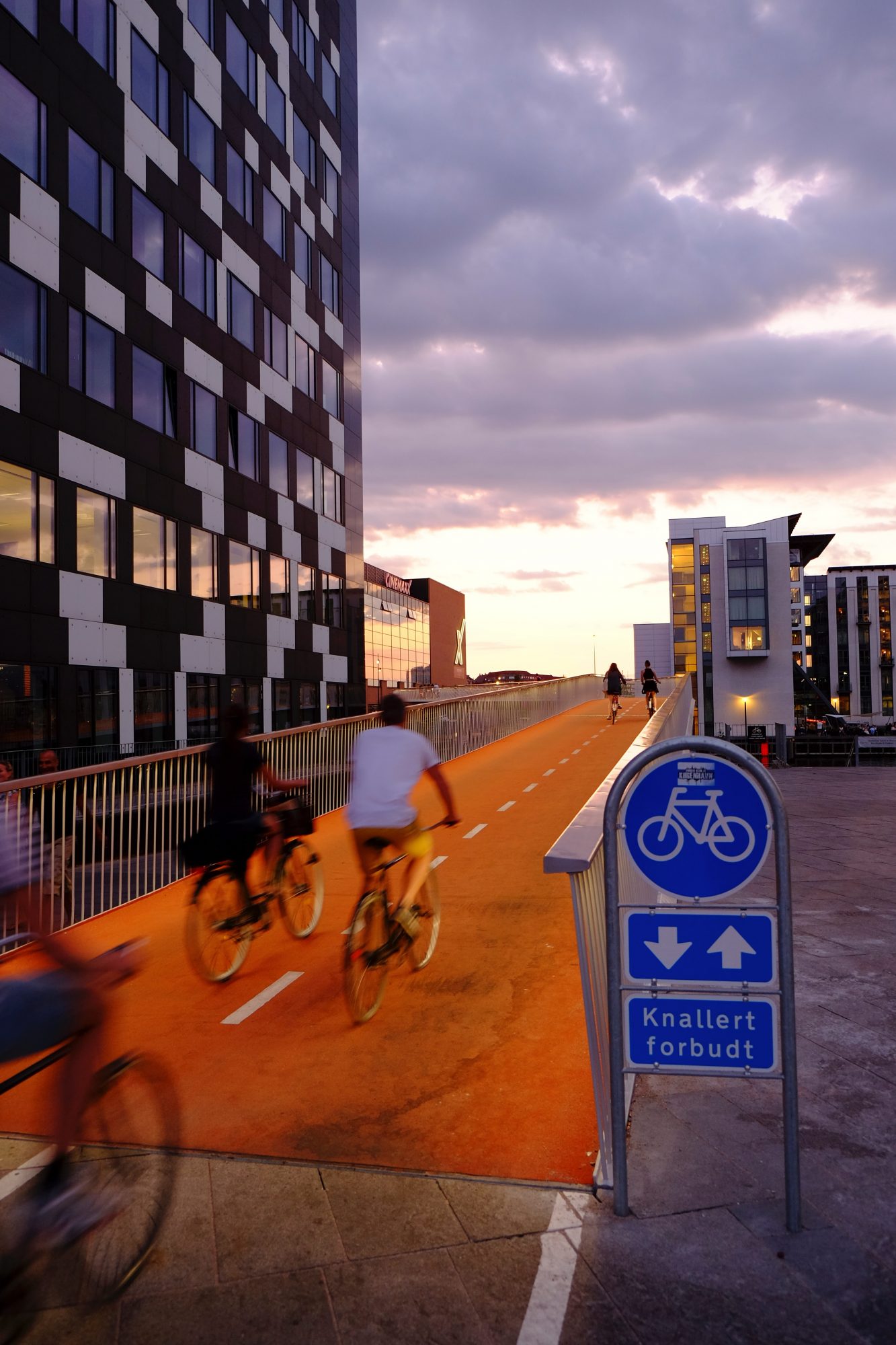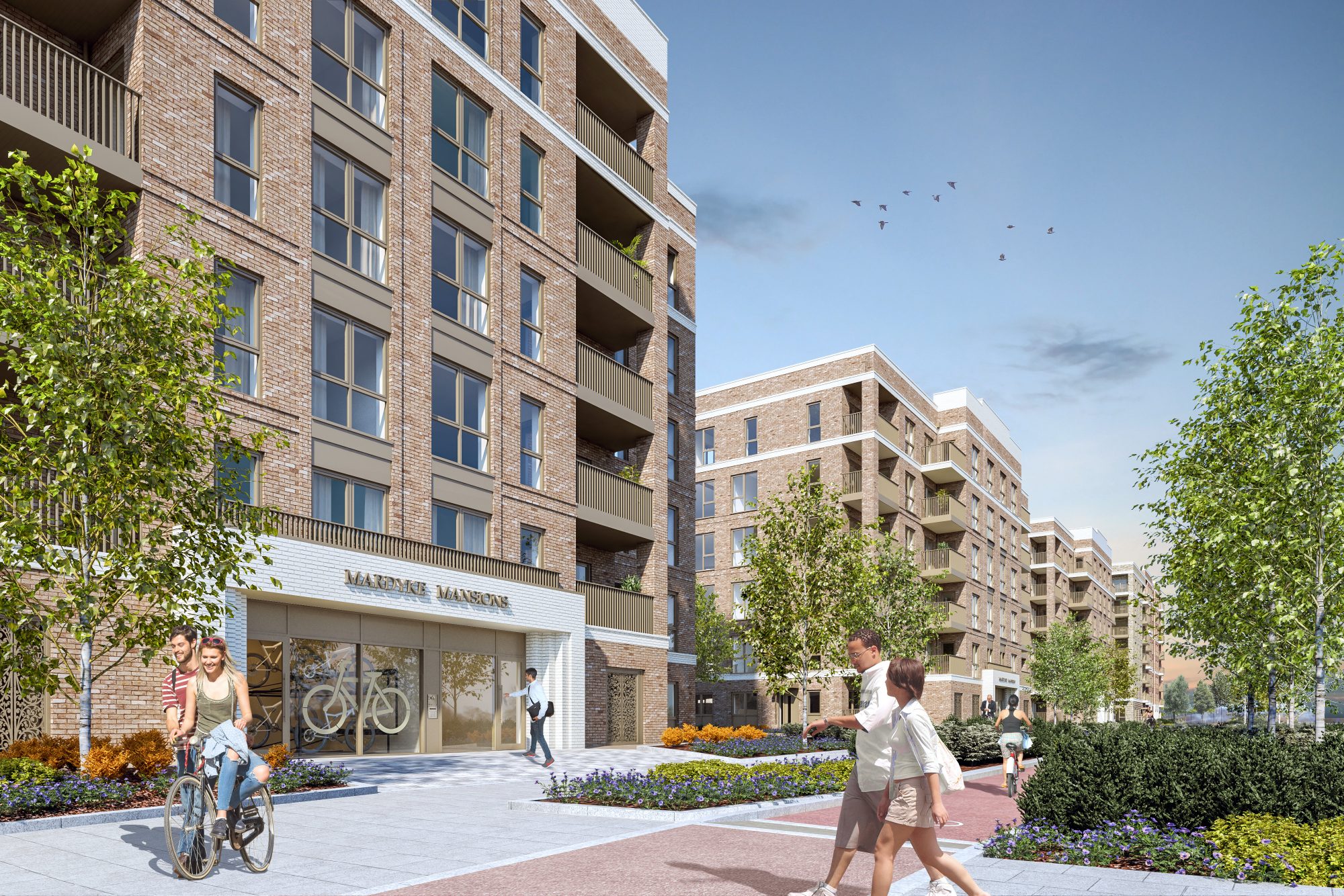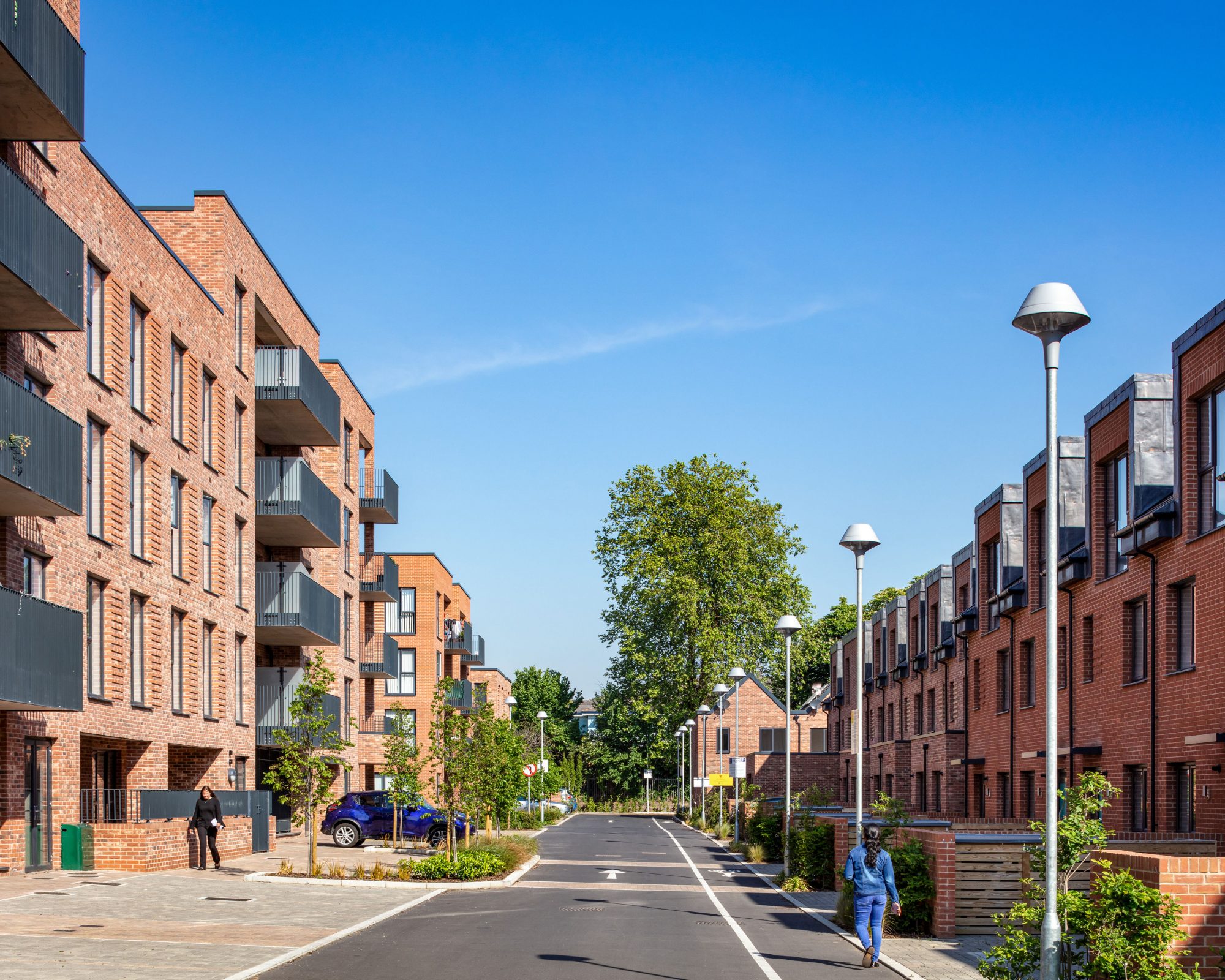12 - 01 - 2022
Co-authored by BPTW’s Andy Laing and Populo Living’s Chris Dancer
Cars have long dominated London’s streets with 54% of London households owning at least one. Streets and towns have been designed to accommodate cars and their parking, limiting space for pedestrians and cyclists. This has resulted in an inefficient use of space and a less desirable public realm, overwhelmed by noisy vehicles and pollution, which in turn discourages pedestrian and cycle movement.
However, many factors are influencing discussions around how we can improve the design of our cities to create spaces which accommodate more economically and environmentally friendly modes of transport. In 2008, then Mayor of London Ken Livingstone dedicated £400 million to improving cycling and walking across the capital and began implementing plans for Cycle Superhighway routes. Later in 2012, the London Olympics helped champion better cycling infrastructure across the capital. Additionally, the successes of the Team GB Cycling Team saw a major increase in cycling popularity and in the years following the Games. In parallel to this, Londoners became more environmentally conscious with the climate crisis being at the forefront of public focus and opinion. More recently, the COVID-19 pandemic has also encouraged people to think more about whether their homes provide the amenity space they need and if this has not been the case, whether their local surroundings are adequate enough.

Post-pandemic London
For over 18 months, Londoners have faced some level of restrictions in terms of movement and socialising. With people only permitted to leave their homes for exercise and essential shopping, many began to see the limitations of where they lived, resulting in many people choosing to move out of cities and into more suburban and even rural settings. However, for others, the pandemic provided an opportunity to take advantage of their local surroundings.
As a result of limited travel and less cars being on the road, 1.3 million Brits purchased a bike during the first lockdown and began building up their confidence on London’s streets. The government also released a £250 million emergency fund for pop-up bike lanes with protected space for cycling, wider pavements, safer junctions and cycle and bus-only corridors. Councils joined by blocking off streets to all traffic to encourage social distancing in major town areas and secondary roads that were identified as “rat runs” were adapted using large planters and bollards with the aim of making them residential use only.
Now, that restrictions have been lifted, Londoners are re-thinking their working, socialising and transport arrangements. Many companies have allowed their staff to work from home for at least part of their week which will undoubtedly cause a decrease in the level of commuters on London’s trains. In addition, as more people have become familiar with the walking and cycle routes they can take to their workplaces, they have developed an awareness of the condition of the streets, their local area layouts and how they can be improved.
Designing a cycling city
In many cities, designs which prioritise cyclists and pedestrians have already been implemented. Cities such as Copenhagen are well known for their investment in cycling infrastructure with 62% of inhabitants travelling to work or school by bike each day. The French capital of Paris is also banning traffic in the four central districts to create a traffic-low zone that will result in a “less polluted, greener, more peaceful and safe city”. London is beginning to follow suit with the Mayor announcing a bold “Streetspace Plan”, designed to accommodate an increase in cycling and walking, and through the expansion of the Ultra-Low Emission Zone (ULEZ).

Improving the design of the city to make greater provisions for cyclists and pedestrians can have numerous benefits, ranging from improved public health all the way through to the reduction of CO2 emissions within our cities. However, this is just the tip of the iceberg.
These designs can create more attractive neighbourhoods, encouraging residents to interact and connect with each other. They also offer people a more affordable mode of transport, a necessity in the face of rising fuel costs and train fares. Additionally, they can make streets more accessible for those with disabilities, particularly wheelchair users who can be put off from using streets due to the condition of the pavements.
In the wake of the pandemic, designing cities based around cyclists and pedestrians can also have an excellent effect on local economies. Research by TFL found that “high street walking, cycling and public realm improvements can increase retail sales by up to 30%”. As such, pedestrianising our streets could be a way out of the economic catastrophe that the pandemic has caused, particularly for local businesses who have been severely affected.
In order to create spaces that are more pedestrian-focused, there are a number of features architects and design teams can integrate into their designs. These include dedicated cycleways, traffic calming measures, additional planting, wider pavements, shared surfaces that are used by cyclists, pedestrians and cars, and increased pedestrian crossings. However, it is not just about designing cities in this way, workspaces also need to bear these modes of transport in mind too. To encourage more people to cycle or walk to their places of work, secure bike storage as well as showers and maintenance facilities should be integrated into these spaces.
At BPTW, we have a number of projects we are working on where we are considering how we can increase pedestrian and cycle space. For example, at 90 New Road, our scheme of 771 homes and over 1,500 sqm of commercial and retail space for Clarion in LB Havering, we have put strong placemaking principles at the forefront of our proposals to create a vibrant community in which people enjoy living. The proposed creation of dedicated cycleways, part of the adjacent Beam Parkway masterplan, will transform what is currently a traffic dominated corridor into a treelined and cycle friendly boulevard. In addition, New Road, a dual carriageway which connects Dagenham and Barking to the west to Rainham and Tilbury to the east, will be downgraded to a single carriageway under the new proposals, enabling pedestrian and cycle infrastructure to be incorporated whilst also increasing the space for landscape. Our designs took these proposals into account, offering a residential frontage along the development that encourages pedestrians to walk along the route or cycle using the proposed single carriageway.

The challenges
Though there are many obvious benefits of designing our streets to prioritise pedestrians and cyclists, designing streetscapes in this way is not without its challenges. Initially, many people have become over-dependent on their cars. By way of example, in London one third of residents travel as a driver or passenger for a journey that could be walked in less than 25 minutes showing that time efficiency is often given priority over health and environmental impact. We need to make cycling as easy as driving.
Additionally, cycling and walking needs to feel like a safe alternative to driving. Designing out crime through better natural surveillance, street lighting and friendlier spaces should be a key design driver, enabling people to feel safer about walking or cycling. Pedestrians and cyclists also need to feel safe in terms of their relationship with other traffic. The pandemic has reduced the amount of traffic on the roads meaning people have had more space to build their confidence when cycling. However, with staff returning to the workplace and many using their cars to do so, inevitably roads will be busier – which will have a negative impact on the number of cyclists using the roads. To overcome this, introducing more dedicated cycleways by expanding the cycle network, introducing safer streetscapes and incorporating traffic calming measures are essential.

Conclusion
The pandemic is likely to have a lasting effect on the workplace, one which is already being felt, particularly with businesses considering a balance between home and office-based working. Additionally, the mounting pressure on businesses and governments to act against climate change is also having an impact on architectural design and technology, and the places we work and live.
London’s cycle infrastructure now extends out to the M25 and has been expanding rapidly since the successful bid for the London 2012 Olympics. However, in the same period we have seen car traffic levels rise dramatically. To tackle this, statutory bodies such as city councils, the GLA, TfL and the central government must promote cycling, walking and the use of sustainable transport in the city through public awareness and engagement campaigns, discourage the use of private vehicles through local planning policy as well as learn from the cycling and walking culture of our European neighbours and the health and wellness benefits that it brings.
Most importantly, statutory bodies must work constructively with professionals in all relevant creative fields to design sustainable streetscapes that focus on sharing street space between cyclists, car users and pedestrians equally. This will result in reduced traffic due to fewer vehicles on the roads, more green space through implementation of enhanced landscapes, less pollution due to a reduction in car fumes, safer streets due to reduced traffic and larger separation distances and a healthier population due to more people taking regular exercise by commuting via bicycle, on foot or public transport.
Insight by


